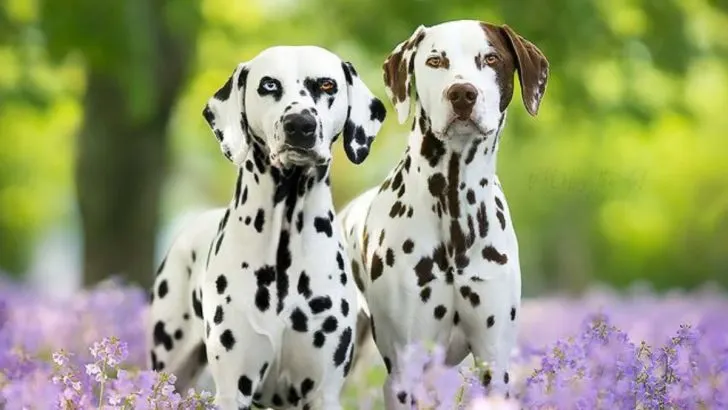Most of us have watched 101 Dalmatians. This Disney classic has shaped our childhood and got us familiar with these adorable spotted dogs. But did you know that there are more Dalmatian colors than just the standard black and white?
Dalmatians were originally bred for dog sports and to serve as carriage dogs and hunting dogs. Over time, they became known as firehouse dogs, and they fulfilled these duties with pride.
However, once they started being depicted in various movies and cartoons, they became beloved family pets.
The main reason behind their popularity was, of course, their adorable, spotted black and white fur.
There isn’t much pattern variation when it comes to Dalmatian colors. All Dalmatians come with spots on a white base coat.
What might be surprising to some is that these spots don’t necessarily have to come in black.
Here is everything you need to know about a large variety of Dalmatian coat colors:
1. Black Dalmatian

Black and white Dalmatians are the standard coat color for this breed.
These dogs have a white base coat and black spots that can be more dense on the dog’s ears. Patches aren’t allowed and are considered a disqualification.
When it comes to eye color, this can vary. The breed standard states that “dark eyes are preferable”, but blue eyes can happen, as well. However, breeding blue-eyed Dalmatians isn’t recommended, as this eye color is typically connected with genes that lead to deafness.
These pups also have black noses, eye rims, and paw pads.
Black is the most dominant coat color in Dalmatians. All other colors are the result of recessive genes, which means that the gene for a specific color has to be inherited from both parent dogs.
2. Blue Dalmatian
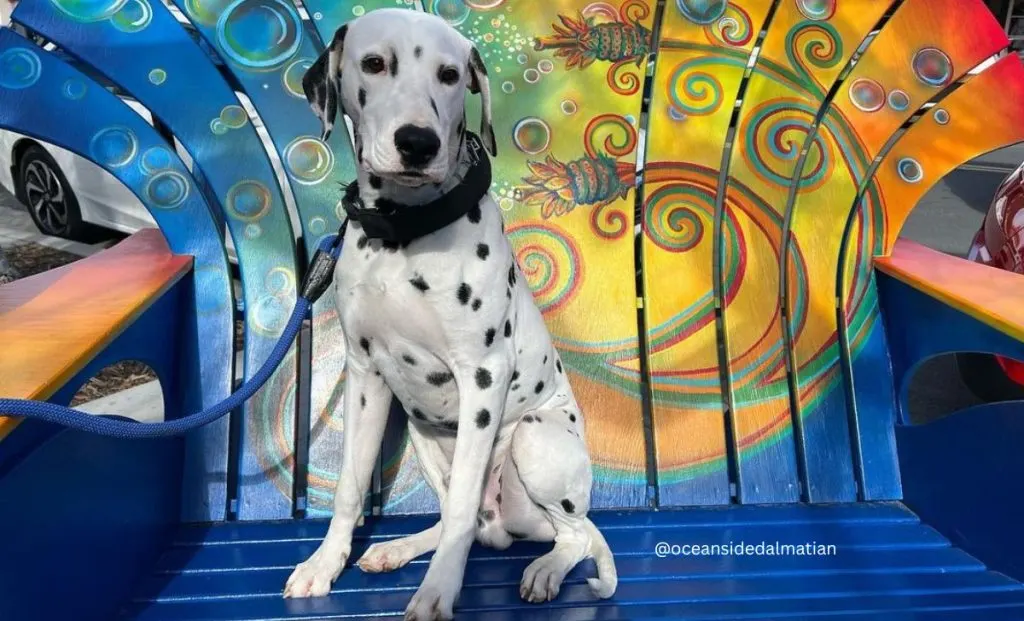
Blue Dalmatians are the result of recessive color dilution genes. These genes dilute any black pigment to a specific blueish-gray color.
The blue dilution doesn’t just affect coat color but also any black pigment on a dog’s body. This means that a blue Dalmatian will also have a blue nose and other visible skin parts, as well as dark blue or gray eyes.
Solid blue is quite common in some breeds of dogs, such as Pitbulls. However, in Dalmatian, it can only appear in spots.
Also, it’s important to note that dilution genes, such as the one that causes blue coats, are connected with some genetic health conditions, including color dilution alopecia (CDA).
Fortunately, CDA won’t cause serious health problems, and it is quite rare. Still, due to this, blue is not considered a standard coat color for many breeds, and this includes Dalmatians.
3. Liver Dalmatian
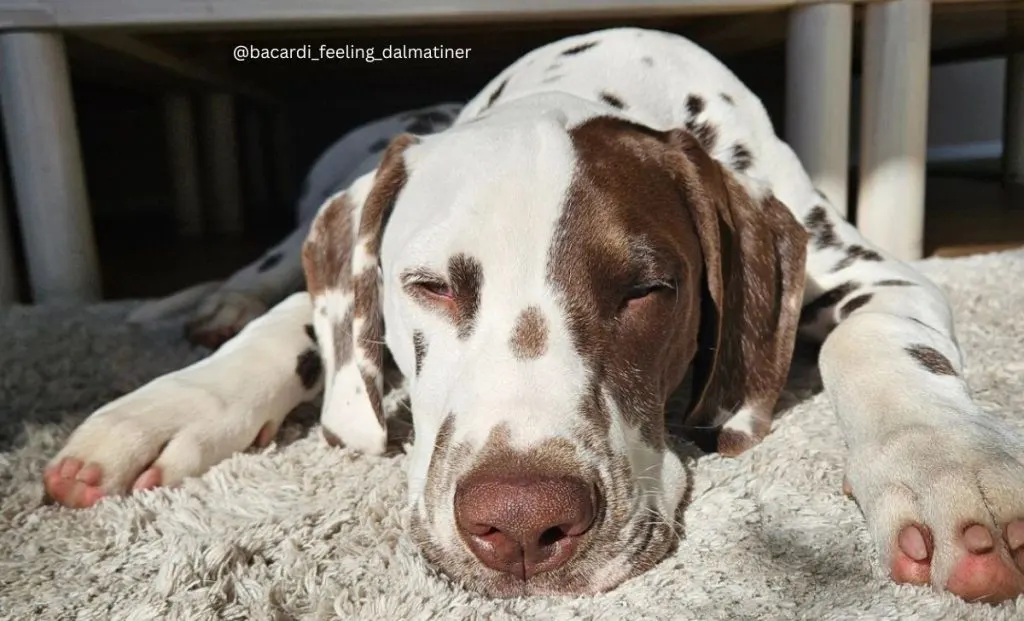
Liver Dalmatians, also known as brown Dalmatians, are the only other Dalmatian standard color.
Just like blue coats, liver color is also caused by a dilution gene. However, this specific gene turns the black pigment into a gorgeous brown to a mahogany color.
This means that the Dalmatians’ spots, noses, and paw pads will also be brown instead of black. Just look at the cute liver nose on this dog!
Liver Dalmatians will commonly have hazel or honey-colored eyes instead of the dark brown that is standard for black dogs. Green eyes can also occur, but they are extremely rare.
4. Lemon Dalmatian

Yes, you’ve read that correctly. Lemon Dalmatians are a real thing, and they are as beautiful as a dog can be.
Lemon is a pretty rare shade in the dog world. One of the other few breeds in which it can appear is the Beagle.
Lemon spots can vary in shade from amber to bright yellow, which is how they got that name in the first place.
These pups will have a black nose contrasting their spots, as well as dark, black eyes. This is proof that the yellow color is not the product of dilution genes, which is the case with blue and liver, but is the result of a rare recessive gene.
5. Tri-colored Dalmatian
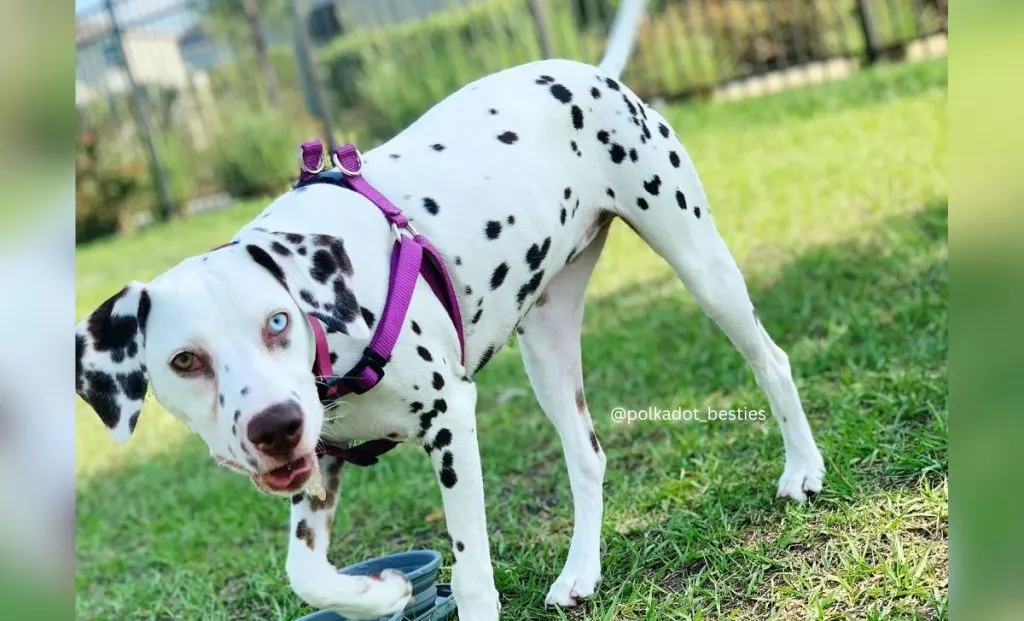
Tri-colored Dalmatians come in two varieties:
- Black, tan, and white Dalmatians
- Liver, tan, and white Dalmatians
Neither of the two is considered standard, but they are recognized by the AKC as a possible color in these doggies.
As their name suggests, tri-colored Dalmatians have a white base coat with spots that are in two colors. Most of the time, the spots will be black and tan. However, if the dilution gene is present, the liver color will be present instead of black.
If the dog has a liver color, its nose will be brown, as well.
Tri-color is quite a handsome pattern on these fit dogs. However, the liver and tan combination might not be as apparent to the naked eye, and you’ll have to take a close look at the dog to realize the difference between the two brown shades.
6. Sable Dalmatian

This is a specific pattern in which a dog’s hair has a certain base color with a black tip. This can give a dog a beautiful black overlay that can make it seem as if its coat is changing color.
Sable is pretty rare in Dalmatians. Most of these pups have been crossbred, so you might want to conduct some additional genetic testing if you wish to ensure you have a purebred dog.
In particular Dalmatians who are indeed purebred, the spots will be a tan or ground color with black tips.
Sable cannot occur on the liver, as the dilution gene prevents any type of black pigment.
It might be challenging to realize your Dalmatian is sable. You’ll need to closely inspect his spots to notice the darker shade on the tips. If this happens, however, you can be certain that you truly have one of the rarest dogs out there.
7. Brindle Dalmatian

Also known as trindle Dalmatians, these are not common dogs.
Brindle is not a color, but rather a striped pattern that might resemble a tiger’s coat – although it can appear on most base colors.
Trindle Dalmatians have brindle spots on their bodies. They can occur in any base color, and might make you think you have a tri-color pooch at first.
However, if you take a closer look, you’ll probably notice the stripes all over the dog’s points.
Another theory is that brindle Dalmatians should have a tan or fawn base coat color – something that almost never happens in the Dalmatian breed.
Because of this, some people argue about whether brindle and trindle Dalmatians can be considered the same shade or not.
8. Orange Dalmatian

Orange Dalmatians are quite similar to yellow ones. One of the differences is that the yellow spots are much darker, and they can vary in shade from gold and ginger to almost bright red.
The other, much more noticeable, is the color of the dog’s nose. Orange Dalmatians will have pink or light brown noses, while, as mentioned, lemon Dalmatians’ noses will be black.
9. Two-tone Dalmatian
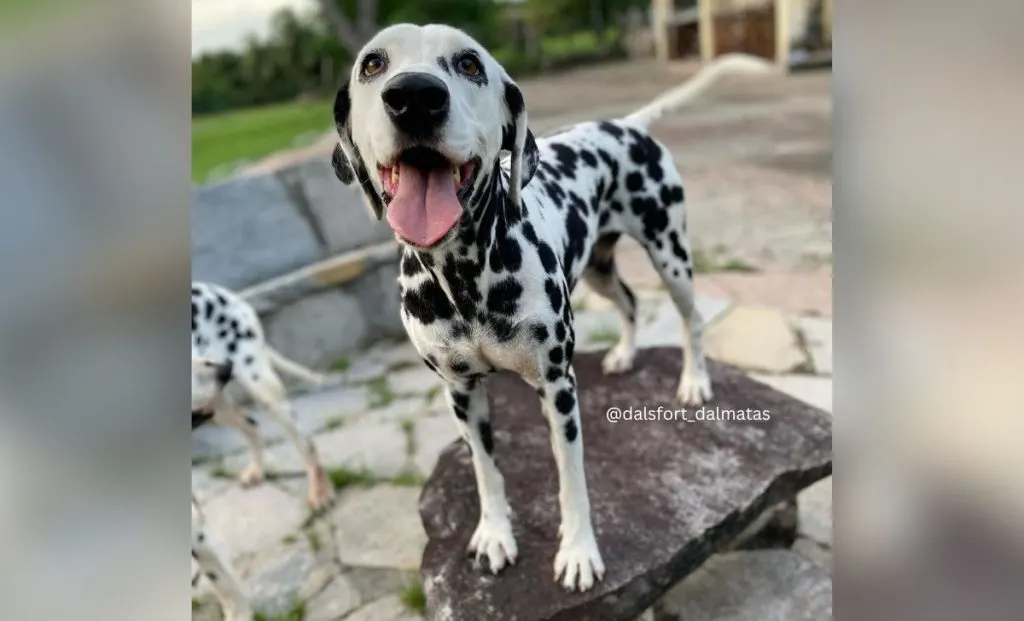
Two-tone Dalmatians are some of the most interesting dogs out there. And no, these are not the same as tri-colored dogs.
This coat color occurs when liver Dalmatians have unique spots that have light centers and dark edges. Due to the dilution genes, their noses will remain brown, and black pigment cannot be seen in any form.
These pups might also have larger spots than some other, more common Dalmatian colors. Still, these are considered spots and not patches and are caused by the same genes as other color combinations.
10. Mosaic Dalmatian
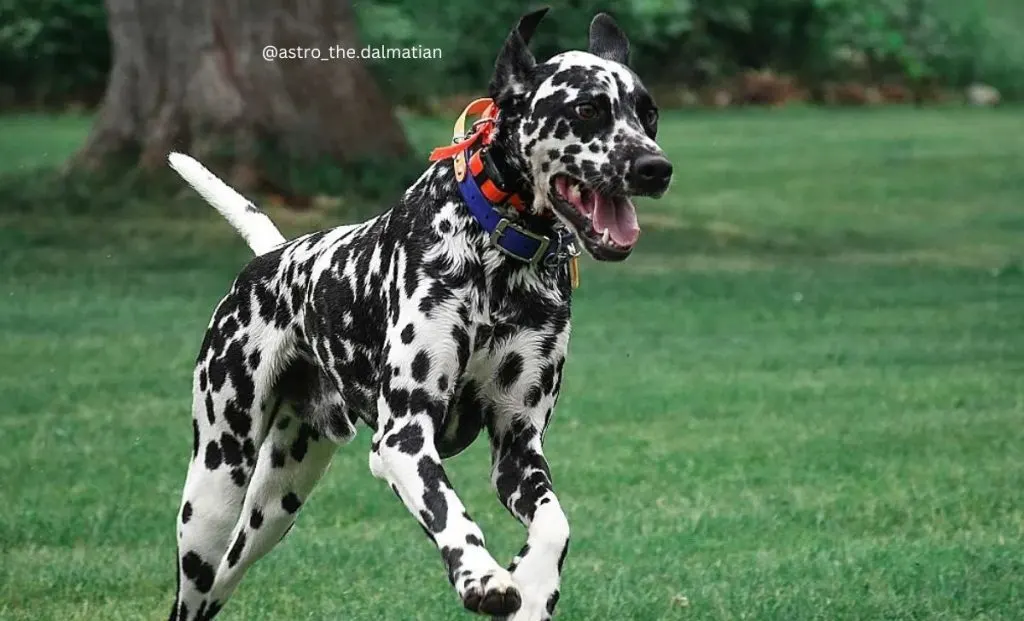
Mosaic Dalmatians are tri-colored Dalmatians but with a twist. They’ll usually have black spots, but with one or two liver spots on their coats.
While they aren’t true mosaics, this is still a rare occurrence, and it isn’t known how or why this spot appears.
No matter the reason, if you happen to find a single spot of a different color on your Dalmatian, know that you own a true rarity.
11. White Dalmatian

Did you know that all Dalmatians are born solid white? Their recognizable spots don’t appear until they are around two weeks of age.
If the color doesn’t appear, this is a clear indication that something is wrong.
Either your pup is having some health issue that has messed with the color genetics, or you’re dealing with a mixed breed.
Owning a mutt is not a bad thing. However, if you’ve purchased a solid white Dalmatian from a breeder, you should know that you were likely scammed and that you didn’t get the dog you were hoping for.
Liver or black spots are mandatory for this dog breed. Every single Dalmatian has the genes for the spotting pattern. If, for any reason, the spots aren’t there, the breeder likely wasn’t entirely honest with you.
Standard Vs Non-standard Colors
All purebred dogs need to adhere to a specific breed standard set by leading kennel clubs. A breed standard is what states not only how big a dog should be and the shape of its body but also any possible colors a dog breed can come in.
The largest kennel club in the United States is the American Kennel Club (AKC). The United Kennel Club (UKC) and Federation Cynologique Internationale (FCI) are two kennel clubs that are in charge of the largest portion of Europe.
When it comes to the AKC, there are some colors that are recognized and others that are considered a standard.
Recognized colors indicate that the color can naturally be found in a specific dog breed. However, colors that are recognized but not a standard cannot participate in conformation shows.
In the case of Dalmatians, the only colors that are considered standard are white with black spots and white with brown (or rather, liver) spots.
This doesn’t mean that a dog that doesn’t come in a standard coat color is a bad pet or that there is something wrong with him. He simply has a color that isn’t considered desirable by experts.
On the other hand, if a pup comes in a color that is neither standard nor recognized, chances are he is either a hybrid or that the color in option is connected with some health issues that have made intentional breeding of it unethical.
Why Do Dalmatians Have Spots?
As mentioned before, all Dalmatians are born white. If they were born with any dark markings, these would be considered patches and not spots.
This is because there are both visual and genetic differences between patches, which are strictly forbidden by all kennel clubs, and spots.
In fact, Dalmatians are pretty unique when it comes to their signature markings. Most scientists still cannot agree on the type of gene that causes Dalmatian spots.
It is considered that Dalmatians carry three types of color genes: Piebald, ticking, and flecking loci. This gene combination results in spots that might keep on forming until a dog reaches his first birthday.
Dalmatians also carry the genes for roan color, something that is quite unique but can be found in a few dog breeds – mostly herding or hound dogs. For example, roan is a fairly rare German Shorthair Pointer color, a dog breed that is related to Dalmatians.
Another gene they carry is the gene responsible for extreme white spotting. Unfortunately, this gene is connected with deafness, which is why many Dalmatians have hearing issues.
No matter the cause of the spots, one thing is certain: This is one of the most unique and distinguishable dogs you can find!
Do Rainbow Dalmatians Exist?
A few years ago, pictures of rainbow Dalmatians started circulating on the internet. This led many people to believe that there is a new variety of Dalmatian colors, one that causes spots in many different colors.
Unfortunately, I have to disappoint you: There is no such thing as a rainbow Dalmatian. These pictures were either photoshopped or photos of dogs that someone drew spots on.
However, as you can see, Dalmatians aren’t just black and white. There are many different colors to choose from, each more beautiful than the other.
No matter the color, all Dalmatians are large, energetic dogs that require lots of attention. This active breed is not for everyone, so don’t purchase them as a Christmas gift just because they look cute.
If you’ve got what it takes to be a Dalmatian owner, then color shouldn’t matter, at least not outside of the show ring.
Just don’t expect your new pet to get rainbow spots!
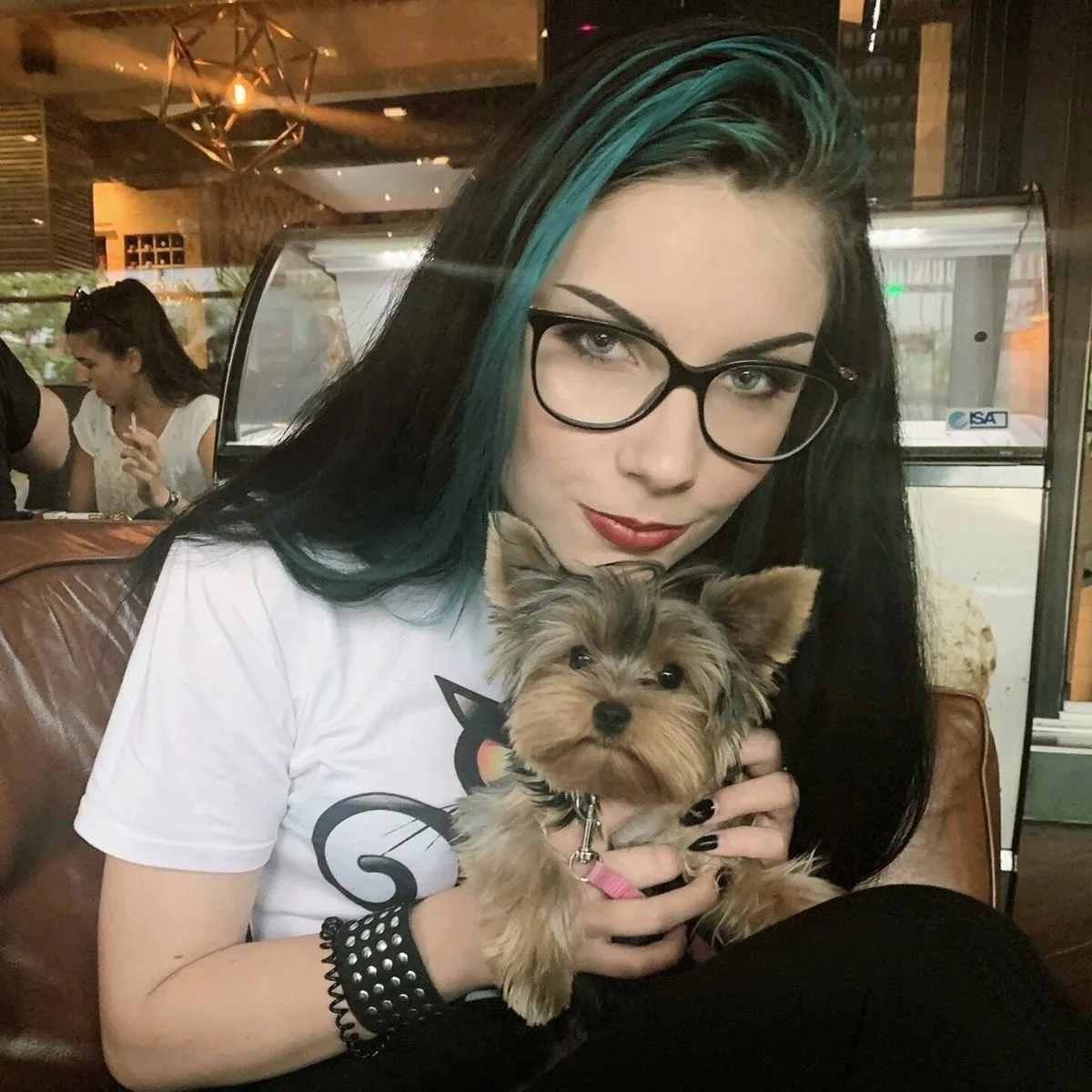
Vanja’s passion for writing started at an early age, which is why she pursued Journalism as her college degree. She can research any topic and find all the information before you bat an eye, which is a great thing for her job but a terrible one for her husband.
Even as a young child, she fell in love with everything fluffy – but dogs have a special place in her heart due to her childhood companion, a Corgie named Archie.
Motivated by her experiences and driven by a desire to give back to her four-legged companions, she spends her free time volunteering at a local dog shelter.
